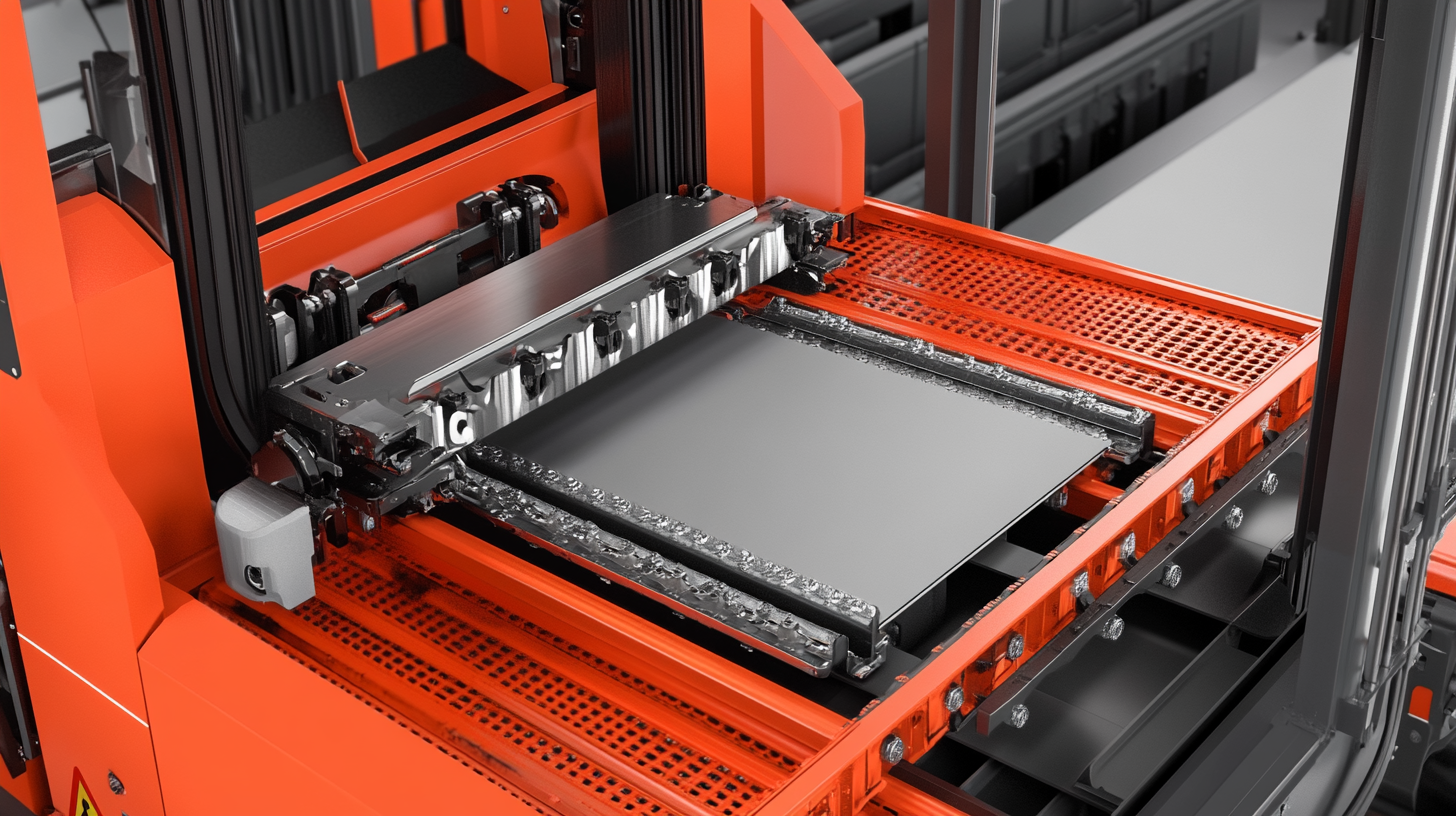7 Essential Insights to Optimize Your Material Handling Efficiency and Reduce Costs
In today’s fast-paced industrial landscape, optimizing Material Handling processes has become a critical focus for companies striving to enhance operational efficiency and reduce costs. According to a report by the Warehousing Education and Research Council (WERC), nearly 50% of warehouse operations identify Material Handling as a key area impacting overall performance. Efficient Material Handling not only streamlines operations but also significantly lowers labor costs, which account for approximately 65% of total operational expenses in logistics.
As businesses face increasing pressure to improve their supply chain efficiency, the demand for innovative Material Handling solutions is at an all-time high. The latest industry data reveals that implementing advanced technologies in Material Handling can lead to up to a 30% increase in productivity and a 25% reduction in inventory handling costs. With these statistics in mind, it's essential for organizations to delve into best practices that leverage modern technologies and strategic methodologies. In this blog, we will explore seven essential insights that can help you optimize your Material Handling operations and ultimately, drive down costs.

Understanding the Impact of Material Handling Efficiency on Overall Operations
In today's competitive landscape, understanding the impact of material handling efficiency on overall operations has never been more critical. As highlighted in recent studies, enhancing operational efficiency is a paramount objective for distributors aiming to outperform their competitors. The latest reports indicate that companies optimizing their material handling processes can boost productivity by as much as 30%. This significant improvement directly correlates to reduced operational costs and increased customer satisfaction, demonstrating how effective material handling can transform an organization’s operational capabilities. Moreover, the global challenges in supply chain management underscore the need for effective material handling strategies. Research shows that firms adopting innovative handling techniques can reduce lead times by nearly 25%, allowing them to respond faster to market demands. Implementing automation and advanced technologies not only streamlines operations but also minimizes errors. For instance, automated guided vehicles (AGVs) can improve inventory accuracy by up to 99%, significantly impacting overall efficiency. Cold chain management is another area where efficient material handling plays a crucial role, especially in healthcare settings. A facility-based study revealed that improved handling practices in cold chain operations led to a 20% increase in health centers' overall operational performance. This highlights the essential link between efficient material handling and effective service delivery, ensuring that critical supplies remain intact and accessible when needed. By focusing on these efficiency-enhancing measures, organizations can not only reduce costs but also build a resilient operational framework that adapts to ongoing global challenges.

Key Strategies for Streamlining Material Movement in Warehouse Environments
In today's competitive landscape, optimizing material movement within warehouse environments is crucial for enhancing efficiency and reducing operational costs. One key strategy involves implementing warehouse automation effectively. While robots are increasingly common in warehouses, many companies fail to fully leverage the potential of these technologies. This often stems from inadequate integration of automated systems into existing workflows, which can lead to underperformance and lost investments. To truly capitalize on warehousing automation, businesses must invest time in planning and training their workforce, ensuring that employees are equipped to work alongside robots efficiently.
Additionally, adopting lean manufacturing principles can significantly influence material handling efficiency. Lean methodologies focus on minimizing waste while maximizing productivity, and when applied to warehouse operations, they can streamline processes such as inventory management and order fulfillment. By analyzing workflow patterns and eliminating bottlenecks, warehouses can create a more agile environment conducive to faster material movement. The alignment of lean practices with automation efforts not only enhances operational efficiency but also promotes a culture of continuous improvement within the organization.
Ultimately, the synergy between advanced technology and lean strategies can create a robust framework for optimizing material handling. Companies must recognize the importance of adapting their supply chain management approaches to harness the full capabilities of both automation and lean principles, ensuring that every aspect of their warehouse operations is finely tuned for performance and cost reduction.

Leveraging Technology: How Automation Can Enhance Material Handling Processes
In today's fast-paced industrial landscape, the integration of technology into material handling processes has become crucial for businesses seeking efficiency and cost-effectiveness. Automation stands at the forefront of this transformation, streamlining operations from inventory management to order fulfillment. By leveraging automated systems, companies can not only enhance accuracy but also significantly reduce labor costs and human error, driving overall productivity.
Automated solutions, such as robotic pickers and conveyor systems, enable seamless movement of materials within warehouses. These technologies facilitate faster processing times and improve the flow of goods, which is especially vital in high-demand environments. Moreover, real-time data analytics and inventory tracking through automated systems allow businesses to optimize their stock levels, minimizing waste and ensuring that resources are allocated effectively.
As industries continue to evolve, embracing automation in material handling is no longer a luxury but a necessity. Companies that invest in these technologies can better adapt to changing market demands while maintaining a competitive edge. The strategic application of automation not only enhances operational efficiency but also contributes to a safer working environment by reducing the physical strain on employees, ultimately creating a more sustainable and future-ready business model.

Cost-Effective Solutions for Optimizing Storage and Retrieval Systems
In today’s competitive landscape, optimizing storage and retrieval systems is crucial for enhancing material handling efficiency and minimizing costs. According to a report by the Material Handling Industry of America, companies can reduce operational costs by up to 25% through the implementation of advanced storage solutions. Automation plays a significant role in this transformation, with automated storage and retrieval systems (AS/RS) demonstrating a notable increase in productivity and accuracy. These systems can cut down on labor costs while improving order fulfillment speed, leading to a more streamlined workflow.
Moreover, effective inventory management is a key component of cost-effective solutions. The Gartner Supply Chain Research found that organizations with robust inventory management practices experience a 20% reduction in excess inventory levels. This reduction not only frees up capital for other investments but also minimizes the risk of obsolescence and waste. By leveraging data analytics and inventory forecasting techniques, businesses can optimize their storage layouts and retrieval processes, ensuring that the right products are in the right place at the right time.
Additionally, focusing on space utilization is essential for optimizing storage systems. The Warehouse Optimization Report indicated that warehouses operating at 85% capacity often yield significant returns through better organization and layout design. Implementing vertical storage options and modular shelving can maximize available space and enhance accessibility, which reduces the time and resources spent in retrieval operations. As a result, companies can not only save on operational costs but also ensure a more efficient handling of materials, directly impacting their bottom line.
Best Practices for Training Employees to Improve Material Handling Efficiency
In today's fast-paced industrial environment, optimizing material handling efficiency has become a pivotal concern for organizations aiming to reduce operational costs. One of the most significant factors in enhancing this efficiency is the training of employees. According to a report by the National Institute of Standards and Technology, companies that invest in employee training programs see a 24% faster production rate and a 30% reduction in handling costs. This highlights the critical link between workforce development and operational efficiency.
Embracing a skills-based work model is essential for modern organizations. By focusing on specific competencies and skills required for various material handling tasks, organizations can tailor their training programs to meet the exact needs of their operations. A survey by the American Society for Training and Development revealed that organizations with a structured onboarding and continuous training approach experience an increase in employee productivity by up to 41%. This improvement leads to fewer errors in material handling processes, ultimately reducing costs and increasing customer satisfaction.
Furthermore, a skills-based organization fosters a culture of continuous learning and professional growth. By equipping employees with the right tools and knowledge, organizations can not only enhance efficiency but also boost employee morale and retention. According to a LinkedIn report, 94% of employees stated they would stay at a company longer if it invested in their career development. Thus, strategic investments in employee training are not just a cost but rather a crucial investment in a company's future sustainability and success in material handling.


